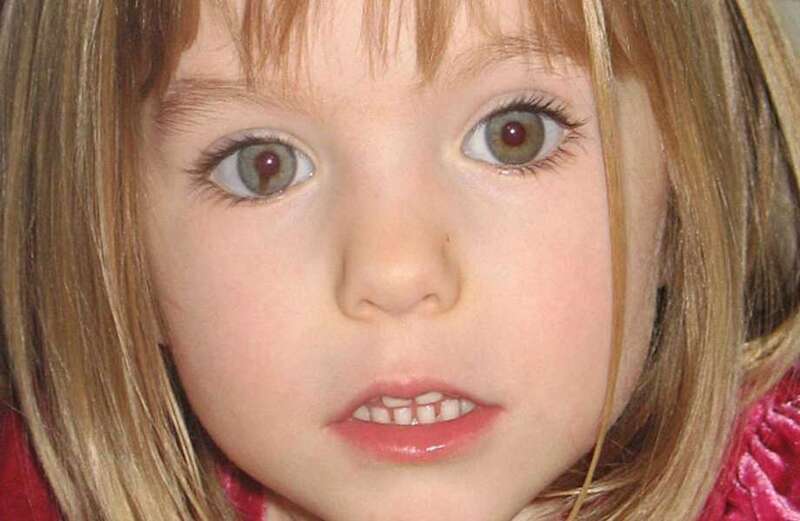THE disappearance of Madeleine McCann is one of the most high-profile missing person cases in the world.
With her face appearing on many a TV screen or poster over the last 17 years, as investigations into her fate continued, many might have noticed a black smudge in her eye - known as coloboma.

What is coloboma?
Coloboma is a rare condition people are born with, which happens when part of the tissue that makes up the eye is missing.
It can affect just one or both eyes and does not mean there is a hole in your peepers - just that they did not fully form during pregnancy.
According to the National Eye Institute, coloboma can affect different parts of the eye, such as the:
 Are there illegal baby names? Surprising monikers that are BANNED in other countries, from Sarah to Thomas
Are there illegal baby names? Surprising monikers that are BANNED in other countries, from Sarah to Thomas
- iris - the coloured part of the eye
- uvea - the layer of the eye that contains the iris
- lens - the clear inner part of the eye that helps the eye focus
- retina - the light-sensitive tissue in the back of the eye
- macula - part of the retina needed for central vision
- optic nerve - the nerve that connects the eye to the brain
It's hard to tell how much a child's vision has been affected until they are older.
The most common form of coloboma is the one affecting the iris - often giving the sufferer a pupil shaped like a keyhole.
Children with this form tend to have fairly good vision, although they might dislike bright lights.
Coloboma can also affect the eyelids.
While many people with the condition might have no symptoms, it can affect the sufferer's vision, causing vision loss or blindness, low vision and sensitivity to light.
How common is coloboma?
Coloboma is extremely rare, only occurring in one in 10,000 births, while Madeleine's mark could affect as few as seven out of one million people.
A spokeswoman for the society told the BBC: “There are about three to seven babies every 100,000 live births, born with any one of these defects.
“Coloboma is more common than the other two conditions.”
Figures suggest only 0.007% of the UK’s population have the condition.
What causes coloboma?
Coloboma occurs when a baby's eye or eyes do not develop properly during pregnancy - which happens between the fourth and 15th week after conception.
 All about Rachel Nickell who was murdered in front of her son Alex Hanscombe
All about Rachel Nickell who was murdered in front of her son Alex Hanscombe
Sometimes it is inherited, but in most cases there is not a genetic link.
However, if your child has coloboma then you yourself should get your eyes tested to check for any undiagnosed problems.
Not much is known about other causes of coloboma, though the National Eye Institute notes that drinking alcohol during pregnancy, may also increase a baby’s risk.
How is coloboma treated?
Coloboma may be visible when your baby is born, so the doctor may be able to diagnose it by looking at their eyes during an exam.
It's always the case that the condition is visible, however.
The rare condition can't be cured - but is monitored with six-monthly and then yearly eye checks.
Some children with coloboma may need to wear glasses, and adults can get cosmetic contact lenses to make the pupil look round.
Prescription sunglasses are sometimes advised, because of the light sensitivity.
Children who have coloboma in only one eye may need to wear an eye patch or use special eye drops to prevent the development of a lazy eye.
Surgery to make the pupils look rounder is also an option.
Where did Madeleine McCann go missing?
Little Maddie, then three, disappeared from her bed in a holiday apartment in Rua Dr Agostinho da Silva, Praia da Luz, a resort in the Algarve region of Portugal.
The McCanns arrived on Saturday, April 28, 2007, for a seven-night spring break at the two-bedroom, ground-floor apartment.
It was in the fifth block of a group of apartments known as Waterside Village.
But on the evening of May 3, the little girl vanished from the apartment where she had been sleeping with her brother and sister.
Her parents were at a nearby restaurant.
When mum Kate returned to check on the kids at around 10pm that evening, she discovered that Madeleine was not in her bed and was missing.
In September of that year, Madeleine's parents, both doctors, were sensationally named as "arguidos" by Portuguese police.
































